Introduction
Battery not lasting long? Swap it out.
Tools
Parts
-
-
Insert another plastic opening tool into the seam between the front and back of the iPod, leaving at least 1.5 inches of space between the two tools.
-
-
-
At an angle, carefully insert a putty knife about 1/8 inch into the seam between the two opening tools.
-
Once the putty knife has cleared the lip of the rear panel, pivot the putty knife so that it is vertical, and carefully (but firmly) wiggle it straight down into the gap between the opening tools.
-
-
-
Push with your fingers on the rear panel behind the putty knife to minimize bending. Slowly flex the putty knife, as shown in the picture, to ensure that most of the metal tabs on this side of the iPod are disengaged.
-
-
-
Remove the putty knife from the iPod and reinsert it closer to the corner of the iPod, using the same wiggle method as before.
-
-
-
Between the lock slider and headphone jack, insert a plastic opening tool into the seam between the front and back of the iPod.
-
-
-
Near the center of the display, carefully insert a metal spudger into the gap created by the plastic opening tool.
-
Using the metal spudger, disengage the single clip on the top of the iPod.
-
-
-
Near the other top corner, insert an opening tool into the seam between the front and back of the iPod
-
-
-
On the other side, insert an opening tool into the seam between the front and back of the iPod.
-
-
-
Remove the plastic opening tool from the top corner and insert it into the seam between the front and back of the iPod, leaving at least 1.5 inches of space between the two tools (as done on the other side).
-
-
-
At an angle, carefully insert a putty knife about 1/8 inch into the seam between the two opening tools.
-
Once the putty knife has cleared the lip of the rear panel, angle the putty knife so that it is vertical, and carefully (but firmly) wiggle it straight down into the iPod via the gap between the plastic opening tools.
-
Push with your fingers on the rear panel behind the putty knife to minimize bending. Ever so slightly flex the putty knife to ensure that most of the metal tabs on this side of the iPod are disengaged.
-
-
-
Continue to push up on the front panel with the metal spudger until the metal clip releases.
-
-
-
Grasp the front panel assembly with one hand and the rear panel with the other.
-
Gently (GENTLY) disengage the remaining clips on the rear panel by pulling the tops of the front and rear panels away from each other (think of the bottom of the iPod as a hinge), taking great care not to damage the ribbon cables holding the two halves together.
-
-
-
Use angled tweezers or an opening tool to lift the brown lock latch straight up by 1 mm. Make sure you pull from both sides of the latch.
-
Grasp the flex cable with your fingers or tweezers and pull it straight up to disconnect it.
-
-
-
Place the rear panel next to the iPod, being careful not to strain the orange headphone jack cable.
-
-
-
Lift the hard drive up with one hand so you can access the headphone jack ribbon beneath.
-
Use a spudger to flip up the plastic tab holding the headphone jack ribbon in place. The tab will rotate up 90 degrees, releasing the ribbon cable.
-
Slide the orange headphone jack ribbon out of its connector.
-
The rear panel is now free from the iPod.
-
-
-
Now to repair the damage caused by liberating the internal parts of the iPod Classic! It is highly likely that at least one of the metal clips in the rear panel has been bent upward. These clips must all be pointing downward in order to reinstall the rear panel.
-
-
-
Take the broad, flat side of the metal spudger and push the clip down, taking care not to tear the thin metal rail from the rear panel. Alternatively a pair of flat pin nosed pliers can be used to reduce risk of slipping and damaging the headphone jack.
-
-
-
On a clean, hard surface, lay the rear panel on its side. Carefully but firmly push down on it, rolling the entire lip side back into its proper spot.
-
-
-
Use a spudger to lift the battery and the attached orange cable out of the iPod. If you have a 160 GB iPod, the battery will be thicker than the one pictured.
-
To reassemble your device, follow these instructions in reverse order.
83 comments
Bought an extra pair of the blue opening tools ... they both broke trying to open the case. Guess this one was a bit more stubborn. What saved me was the mini-screwdriver on a Leatherman Micro multitool & the iFixIt Metal Spudger.
Insert a plastic opening tool into the seam between the front and back of the iPod.
This is not possible for ipod 6th gen, I think ifitit may did for 5th gen?
It IS possible and it's really REALLY tough. The plastic tool included in this set is enough to keep seams open where they show in steps 2 and 3 just wide enough for you to put something else in there. But to start them, I used an exacto like blade. When I did this job, I had 3 regular spudgers, the 2 tools provided here, 4 different style green spudgers from somewhere else, 5 large 'guitar picks' sold here to cut the glue holding new iMac screens to the case, the metal spudger, and an exacto type blade.
It was still an incredibly laborious job and although the iPod is back together and works perfectly, one of the seams is bent out a little.
Well, *that* was interesting!
Firstly, as a few have mentioned here, the 6th-generation classics are more tightly-sealed than their immediate forebears, so the otherwise-useful plastic tools included in the battery-replacement kit won't cut it all by themselves; artful (and careful!) application of the metal spudger tool was also required. Thankfully, years of freelance IT work on recalcitrant Macs of all stripes helped prepare me for this bit of improvisation, even though this was the first time I've taken a crack at an iPod (my own 120GB classic - thin version). Happily, other than twisting that one metal clip near the headphone jack - apparently impossible to avoid - and some very minor cosmetic damage, the balance of work went without a hitch. I speculate why Apple makes us go though this, but that's for another thread. Thanks for the kit and tools!
LOL! The reason they make it hard to service is that Apple Authorized repair wants $360.00 US to replace the battery!
I think you will find that the Jimmy tool works better than a spudger and won’t bend the case. It will slide between the case front and the holding flanges and pop them loose. Before you say it, yes I have done this with 6 and 7G. I agree it is a little more challenging than earlier models, but it works equally well.
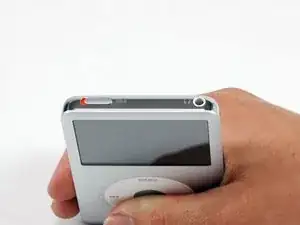
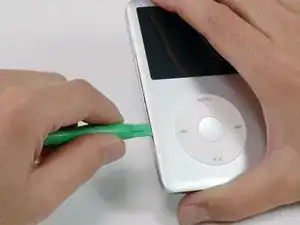
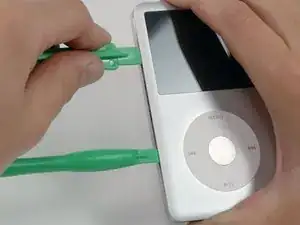
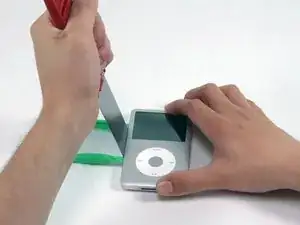
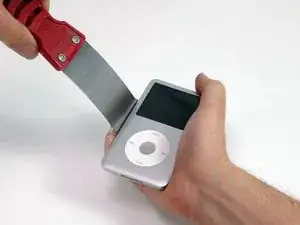
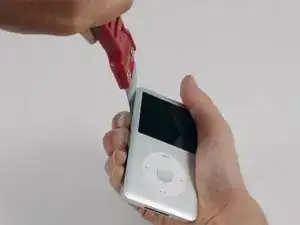

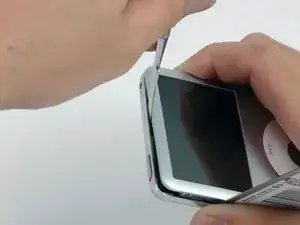
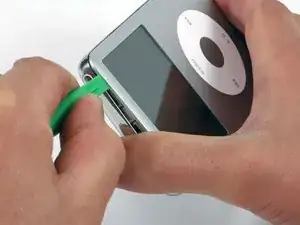
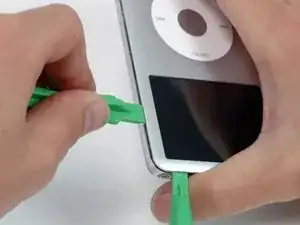
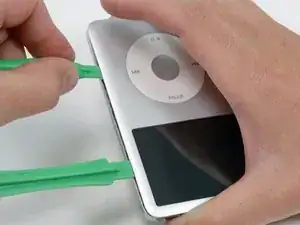
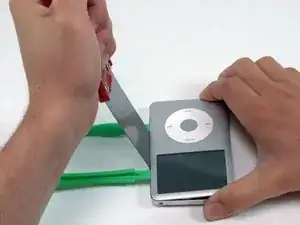

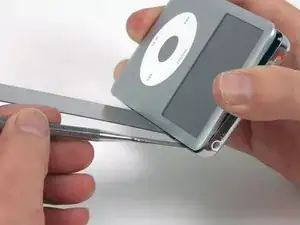

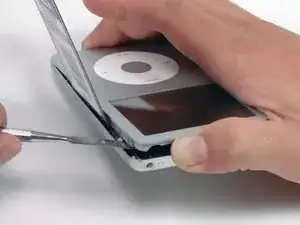
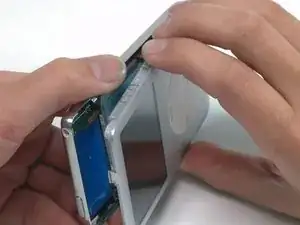
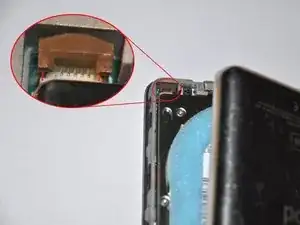
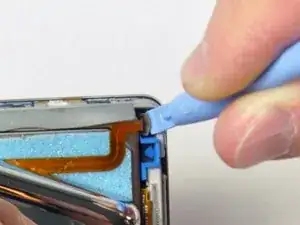
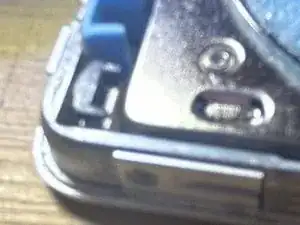

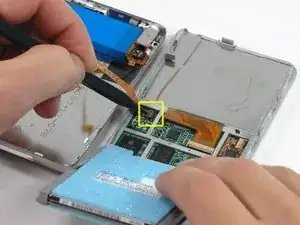
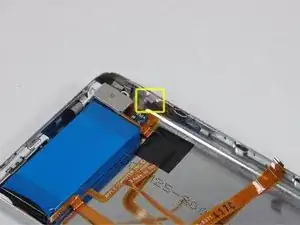


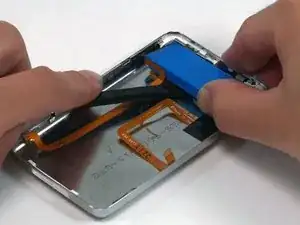
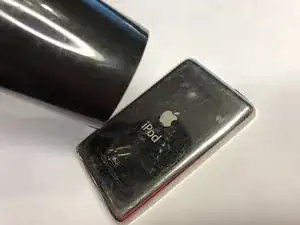

Actually, there are only 11 metal clips. From the face side:
On the top, only 1 clip centred 35mm from LHS. Avoid the first 30mm on the LHS, and the last 20mm on the RHS
On the RHS there are 4 tabs centred at 20mm, 40mm, 65mm and 85mm from the top. Take great care to avoid the topmost 15mm
On the LHS there are 4 tabs centred at 20mm, 40mm, 65mm and 85mm from the top
On the bottom, there are 2 tabs, each one 10mm in from the edge.
Also, I bought 2 spudger bars with the battery, and found them invaluable. The plastic ones supplied are nearly useless
astutebs -
Okay, I’m a noob, what’s an LHS…I assume it’s “Left..H…S" and RHS is “Right…H…S”, but please elucidate.
Miguel FC -
Left Hand Side
Right Hand Side
darren_chalk -
take your time, be patient, it’s hard but you can do it. Watch other videos from youtube for battery replacement for your model to supplement this written procedure - particularly with regard to releasing the battery ribbon connector. I have the hardest one to crack open I and got it done and I’m 63 years old with bad hands…..my ipod classic now works good as new!!!!!!
Donald Diebold -
Hold Switch in locked position....What is it...What is hold switch? what is locked position? Pl.explain
Alagappan Natarajan -
The hold switch is on the top.When you see the color on the hold switch. It's either locked or not.
Paul wortman -